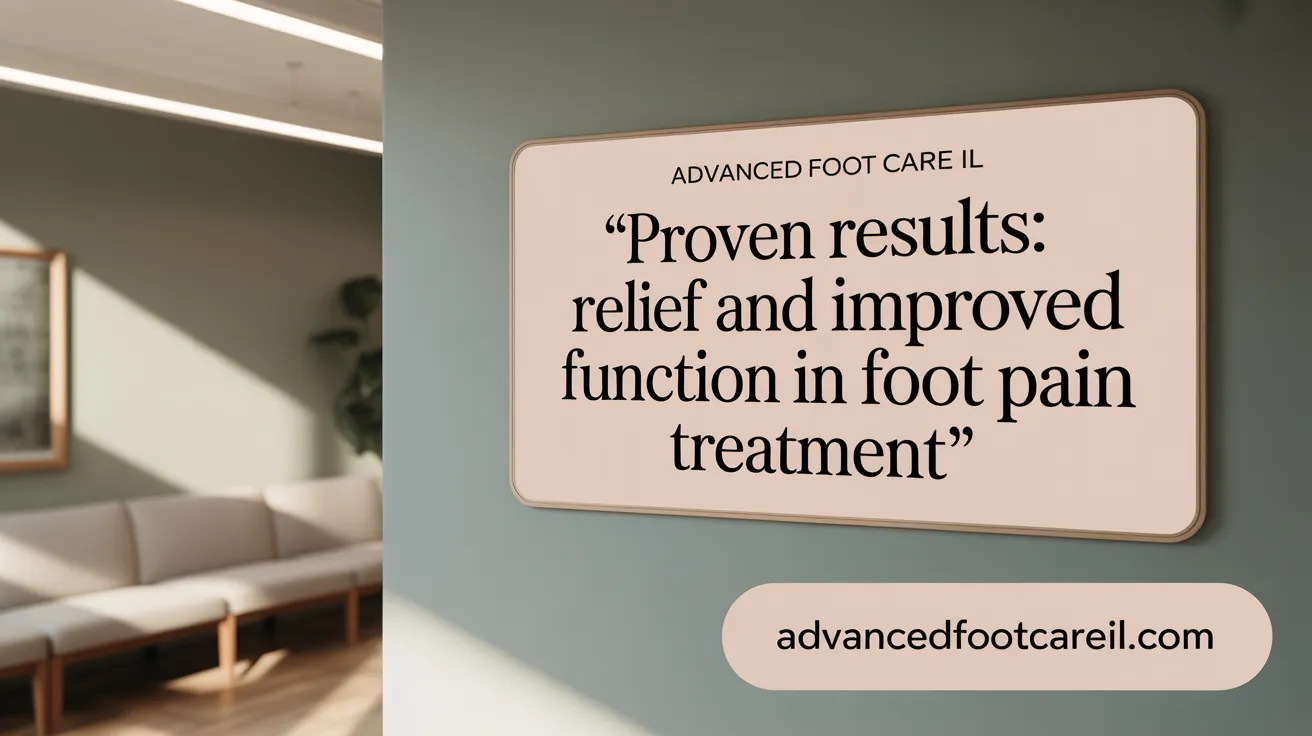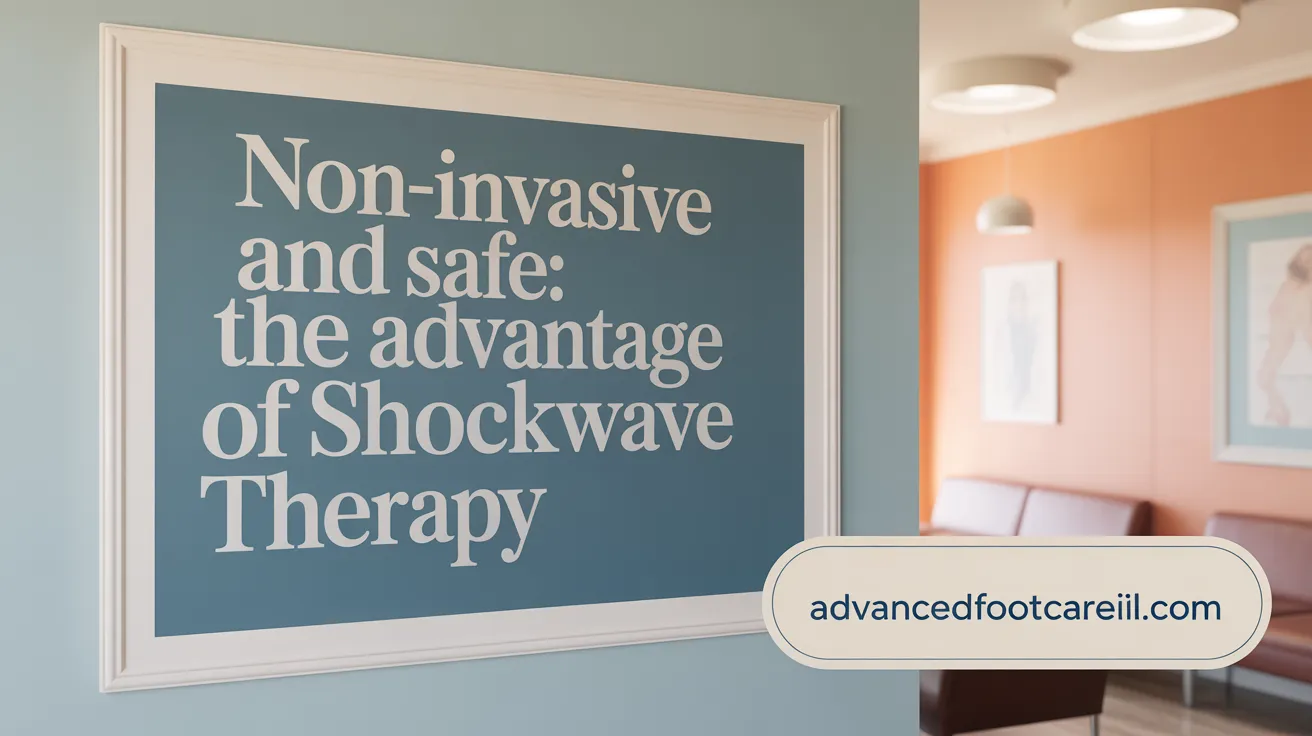Introduction to Shockwave Therapy in Foot Pain Management
Foot pain, a common ailment affecting millions, often results from conditions like plantar fasciitis and Achilles tendinopathy. Traditional treatments can be limited or invasive, but shockwave therapy emerges as a non-invasive breakthrough, offering significant relief and healing. This article explores the science, application, benefits, safety, and future of shockwave therapy as a cutting-edge solution in foot pain management.
Understanding Shockwave Therapy: Mechanism and Application

What is shockwave therapy and how does it work?
Shockwave therapy, known medically as extracorporeal shockwave therapy (ESWT), is a non-invasive treatment designed to stimulate the body's natural repair mechanisms. It employs high-energy acoustic waves that create controlled microtrauma in injured tissues. This microtrauma initiates a biological response involving increased blood flow, stimulation of collagen synthesis, and the release of critical growth factors such as VEGF and TGF-β1. These processes enhance tissue regeneration, reduce inflammation, and help break down scar tissue or calcifications, which often contribute to chronic foot pain conditions. For more on how shockwave therapy promotes healing, see this detailed explanation.
What types of shockwave therapy exist and how are they used?
There are two primary types of shockwave therapy:
-
Focused Shockwave Therapy (FSWT): This method generates concentrated acoustic waves that penetrate more deeply into tissues, making it especially useful for targeting precise, chronic deep injuries.
-
Radial Shockwave Therapy (RSWT): This approach disperses shockwaves over a broader area at more superficial tissue depths. It is typically gentler and suited for less focal or more diffuse foot conditions.
Both focused and radial therapies are widely applied to treat common foot disorders such as plantar fasciitis—a painful inflammation affecting the tissue supporting the foot arch—and Achilles tendinopathy, which involves degeneration or inflammation of the Achilles tendon. For more uses and benefits of these therapies, see Shockwave Therapy for Plantar Fasciitis and Extracorporeal Shockwave Therapy (ESWT) Overview.
What does the shockwave therapy procedure involve?
During treatment, a clinician uses a handheld device to apply shockwaves through a gel interface placed on the skin over the affected area. Sessions generally last about 15 to 20 minutes. Typical treatment courses involve multiple sessions, often between 3 to 6, spaced about one week apart. Results may start to appear after a few sessions, with continued healing effects lasting for several weeks as tissue regeneration progresses.
This therapy is favored for its non-invasiveness, minimal discomfort, and quick recovery time, enabling patients to typically resume normal activities soon after treatment. For insights on the shockwave therapy procedure and patient experience, see this resource.
Clinical Effectiveness of Shockwave Therapy for Foot Pain

How effective is shockwave therapy in treating foot pain?
Shockwave therapy has proven to be a highly effective treatment for foot pain, particularly for chronic plantar fasciitis. Numerous clinical studies and randomized controlled trials have shown significant reductions in pain and improvements in function following treatment. For example, focal shockwave therapy has demonstrated a marked decrease in pain levels measured by the Visual Analog Scale (VAS), as well as enhanced functional outcomes and quality of life scores sustained for up to 12 weeks and beyond. Patients typically experience substantial pain relief after a few sessions, with durable benefits that can last for months or even years (Shockwave Therapy Effectiveness, Shockwave Therapy for Foot Pain).
What is the typical treatment protocol and timeline for patients?
The standard treatment involves 3 to 5 sessions of shockwave therapy, each lasting approximately 15 to 20 minutes, with sessions spaced about a week apart (Shockwave Therapy Treatment Details, Extracorporeal Shock Wave Therapy (ESWT)). Many patients notice pain reduction as early as after two treatments. Healing and functional improvements continue to develop gradually over several weeks, often reaching their peak around 3 months post-treatment. Long-term follow-up data indicate that the improvements in pain and foot function are maintained well beyond the immediate treatment period, contributing to sustained quality of life enhancements for those suffering from chronic foot pain (Long-Term Effectiveness of ESWT).
Outcomes in pain reduction, function, and quality of life
Patients undergoing shockwave therapy often report:
- Rapid reduction of pain intensity (Pain Relief with Shockwave Therapy)
- Improved foot function, allowing more normal activity levels (Functional Improvement After Shockwave Treatment)
- Enhanced quality of life due to decreased discomfort and improved mobility (Quality of Life Improvements
This multi-faceted benefit positions shockwave therapy as a well-supported, non-invasive option for foot pain management, especially when conservative treatments have failed (Shockwave Therapy Benefits, Extracorporeal Shockwave Therapy Overview).
Benefits and Advantages Over Traditional Treatments

What are the benefits of shockwave therapy compared to traditional treatments?
Shockwave therapy offers significant benefits compared to traditional options for treating foot pain and musculoskeletal conditions. It is a non-invasive procedure that requires no anesthesia or surgery, making it safer and less intimidating for many patients. Most individuals experience minimal discomfort during the treatment, which typically lasts 15 to 20 minutes per session. Unlike corticosteroid injections or surgical interventions, shockwave therapy promotes natural tissue regeneration by increasing blood flow and stimulating collagen production.
Patients can usually resume normal activities right after treatment with only mild soreness or redness, and the overall downtime is minimal. This convenience allows for effective management of both chronic conditions, like plantar fasciitis unresponsive to conservative care, and newer injuries without interrupting daily routines.
Are there any risks or side effects associated with shockwave therapy?
Shockwave therapy boasts a strong safety profile with mostly minor and temporary side effects. Common reactions include transient pain during or after treatment, slight skin redness, swelling, or bruising at the treatment site. More serious complications such as tissue or nerve damage are rare and usually result from improper application or technique.
Certain patients should avoid shockwave therapy, including pregnant women, those with bleeding disorders, infections, or tumors near the target area. Selecting a qualified and experienced provider is essential to minimizing risks and ensuring appropriate treatment parameters are followed.
Why consider shockwave therapy?
- Non-invasive alternative to surgery (Extracorporeal Shockwave Therapy (ESWT) overview
- Avoids risks related to steroid injections (Avoiding steroid injections with ESWT)
- Stimulates healing and tissue regeneration (Healing injured tendons and ligaments)
- Minimal side effects with rapid recovery (Post-Treatment Recovery)
- Suitable for a broad range of acute and chronic musculoskeletal conditions (Conditions treated by ESWT
- Allows quick return to normal activities (Immediate return to normal activities)
Shockwave therapy serves as a versatile, safe, and effective treatment option, particularly attractive when conventional treatments have failed or are contraindicated.
Patient Experience and Post-Treatment Guidelines

What do patients experience during shockwave therapy sessions
Patients undergoing shockwave therapy typically feel pulses of acoustic energy delivered through a handheld device applied to the affected foot area. This treatment sensation is often described as a tapping or pulsating feeling accompanied by a mild warmth. Although some mild discomfort may be experienced, the procedure is generally well tolerated and not painful. Each therapy session usually lasts between 15 to 20 minutes per treatment area.
Typical side effects and management
After therapy, patients might notice temporary side effects such as mild soreness, redness, or swelling around the treated site. These reactions usually subside within a few days without requiring significant medical intervention. Managing these effects involves simple self-care measures like applying ice and avoiding aggravating activities. For more detailed information on shockwave therapy risks and side effects and how to minimize them, patients should consult with healthcare providers.
Post-treatment care and activity recommendations
Following a shockwave therapy session, it is recommended to rest the treated foot for about 24 hours. Patients should avoid strenuous physical activities and refrain from using anti-inflammatory medications for a short period, since these medications can hinder the natural healing stimulated by therapy. Despite this, normal daily activities are typically resumed immediately, making the treatment convenient for many individuals. For more on what not to do after shockwave therapy, patients can refer to specialized care guides.
Expected recovery timeline and long-term outlook
Most patients report noticeable symptom improvement within a few weeks after starting therapy. Pain relief and increased function continue to develop gradually, often lasting for several months or longer. The procedure supports long-term healing by promoting blood flow and tissue regeneration, contributing to lasting recovery in chronic foot conditions. For comprehensive data on long-term effectiveness of shockwave therapy, patients and clinicians can access clinical research articles.
Emerging Trends and Future Perspectives in Shockwave Therapy

What are current and emerging uses of shockwave therapy in foot and musculoskeletal care?
Shockwave therapy, traditionally used for plantar fasciitis and tendinopathies, now extends its benefits to a range of other musculoskeletal issues such as stress fractures, ligament sprains, and nerve-related problems including Morton’s neuroma. Newer forms like SoftWave Therapy provide a gentler, broad-focused treatment, increasing patient comfort and treatment flexibility.
Besides foot and sports injuries, research is advancing into neurological applications where shockwave therapy helps reduce spasticity linked to conditions like stroke and multiple sclerosis (The Evolving Use of Extracorporeal Shock Wave Therapy – Mayo Clinic). Integrating shockwave therapy with regenerative treatments such as platelet-rich plasma (PRP) is another promising direction to amplify healing and recovery.
How is shockwave therapy evolving in technology and clinical practice?
Technological progress has introduced ergonomic, portable devices, allowing practitioners to deliver treatment beyond traditional clinics, even in-home settings (Shockwave Therapy Benefits and Devices – UC Health. These devices contribute to easier and more accessible therapy sessions. Clinical practices are evolving to incorporate shockwave therapy with physical therapy and minimally invasive surgical approaches, optimizing patient outcomes (Shockwave Therapy and Rehab – Boston Children’s Hospital.
Ongoing innovations are also exploring shockwave-induced nerve regeneration, cartilage repair, and expanded use in chronic pain management. Although insurance coverage varies, the therapy’s safety profile and therapeutic results support its growing integration into comprehensive musculoskeletal care portfolios (Shockwave Therapy Safety and Coverage – Cleveland Clinic Canada).
Conclusion: Embracing Shockwave Therapy for Enhanced Foot Health
Shockwave therapy represents a significant advancement in the management of chronic foot pain, notably plantar fasciitis and tendinopathies. Its non-invasive nature, proven efficacy, favorable safety profile, and rapid recovery time make it an attractive alternative to traditional invasive treatments. As research progresses and technology evolves, shockwave therapy is poised to expand its role across a broader spectrum of musculoskeletal and neurological conditions, offering patients renewed hope for effective, lasting relief and a better quality of life.
